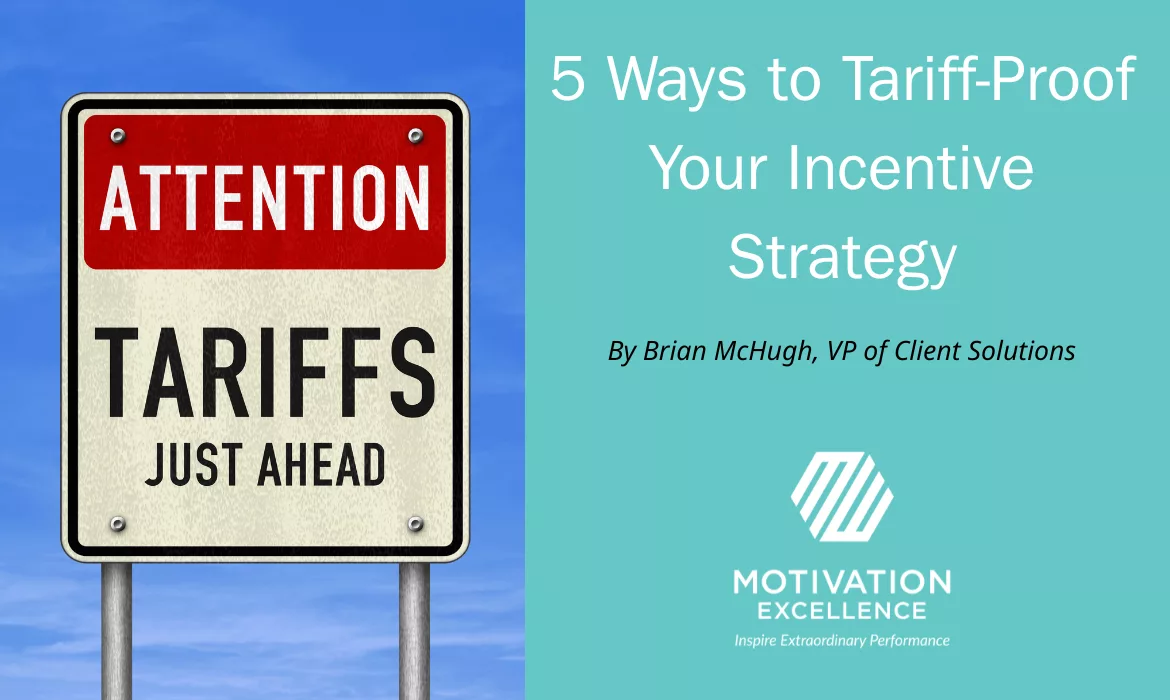
Tariffs are no longer just a headline; they are a daily reality reshaping the wholesale distribution landscape. Recent data underscores the urgency and impact this is having on this large sector.
- In a June 2025 survey of over 4,000 small business owners,72% of wholesalers reported lower revenues due to tariffs.
- The wholesale trade sector is absorbing an estimated $48.7 billion in import duties, representing more than half of the U.S. economy’s total tariff exposure.
- Margins are under intense pressure, with 44% of small business owners seeing direct revenue losses from tariffs and the average decline reaching 13%.
This new data reinforces earlier research from the National Association of Wholesaler Distributors, which found that 62% of distributors expect their cost of goods sold to rise by at least 10% in 2025 and only 2.5% report any positive effect from tariffs.
Traditional incentive models can prove unsustainable in this environment. To maintain profitability in this constrained market, a better approach is needed to tariff-proof your incentive strategy. At Motivation Excellence, many of our clients are in the B2B distribution channel. Here’s some thought leadership we can offer others out there looking at their incentive strategies:
1. Focus on Emotional Loyalty
Buying decisions often start with emotion and get justified with logic. In wholesale distribution, most products are bought rather than actively sold. The real opportunity lies in building deeper relationships and creating more meaningful experiences. When products feel interchangeable, the experience becomes the differentiator. Group incentive travel is a proven tactic. According to the Incentive Research Foundation, 73% of participants reported that they increased loyalty to the sponsoring company after attending and 91% of respondents find group travel “very” or “extremely” motivating. Further,72% say relationship building is the most important benefit.
2. Make Use of Behavior-Based Incentives
Moving beyond volume-based rewards and focusing on long-term, value-driving behaviors is essential. Some examples include:
- completion of product training
- adoption of digital tools
- participation in joint marketing campaigns
A manufacturer might offer tiered rewards for partners who complete training modules and submit a case study or testimonials, thereby increasing their product knowledge. This approach encourages channel partners to invest in their own growth and education. Often, the root of the problem is different than the symptoms. Behavior-based incentives close this knowledge gap, empowering channel partners to sell with confidence and deliver greater value to customers.
3. Help Customers Grow Their Business with Cross-Selling and Upselling
Instead of simply trying to add incentives for pushing more products, help your customers sell more by incentivizing cross-selling and upselling solutions that fit their needs. For example, in plumbing distribution, rather than just promoting another type of pipe, create incentives for contractors who sell water heaters with compatible smart thermostats or leak detection systems. This not only increases average order value but also positions the distributor as a partner in business growth, not just a supplier. The best distributors provide training, sales tools, and support to help customers identify new revenue opportunities and close more sales.
4. Close the Feedback Loop
Use your incentive program to gather input through surveys or other feedback tools. This gives you insight into what they need and where the market is heading. Electrical Trends, the electrical distribution industry’s blog, had a recent article on Competing, and Winning, in a Tariff Induced World which states, “Doing business the way you did it will not drive profitable growth.” Now is the time to do research on growth segments, understand what customers’ needs are, and determine what they need from you. Feedback through surveys ensures your strategy, culture, and logistics keep pace. Offering an incentive to take these surveys or making them a part of your current incentive program, is essential for understanding why customers buy from you and what they value most.
5. Train Your Sales Team to Sell on Value
Sales teams need to show how your products or services save time or money. In the channel, price is often passed through to the end customer, so the focus should be on the solution and how you differentiate. With most projects running over budget now, end users are under pressure to justify every dollar and the value you provide. Your sales team needs to be solution-focused but should also know how to use the incentive program as a tool in that conversation. They should understand the rules and apply the program as part of their strategy to close deals. When they do, they move the conversation from price to value.
Mid-year is often the hardest time to change programs and pricing —or even rebate structures — for many distributors. But it’s a great time to start looking ahead. Since margin pressure will not be easing anytime soon, the real questions are:
- How will you adapt for 2026?
- Are you getting the right guidance to evolve your strategy?
Companies that start shifting their strategy now will be in a stronger position to grow in a more competitive and constrained market come January 1st.
If you’re starting to think about what comes next for you and your distribution channel and incentive strategy, we would be happy to consult with you, free of charge.


